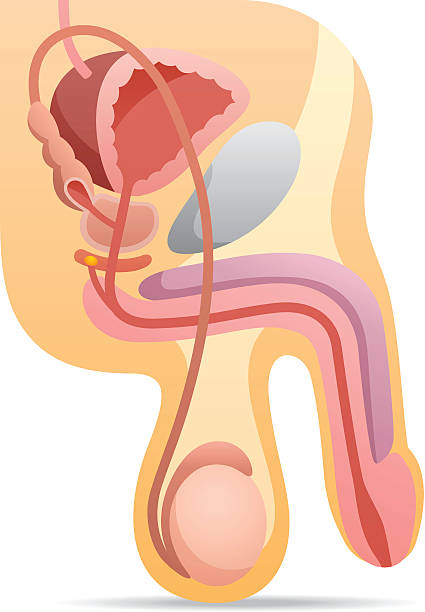The penis, often seen as the epitome of masculinity and vitality, holds a plethora of mysteries despite its familiarity. Understanding the penis, from its intricate anatomy to its sexual health role, is crucial for overall well-being. Let’s delve into the top 10 secrets about your penis:
- Keep It Active or Lose It:
Dr. Tobias Kohler’s emphasis on maintaining erections for penile health underscores the importance of regular blood flow to the penis. The process of achieving an erection not only serves a sexual function but also acts as a form of exercise for the penile smooth muscle. This muscle needs periodic oxygenation through engorgement with blood to stay healthy and maintain its elasticity. Dr. Kohler’s reference to REM sleep highlights the brain’s role in ensuring regular erections, even when not consciously induced. This automatic mechanism underscores the body’s natural inclination towards penile health maintenance. Additionally, Dr. Kohler’s recommendation of vacuum pumps for men with physical erection difficulties underscores the importance of proactive measures in addressing potential penile health issues. - Your Penis: A Grower or a Shower:
The variability in penile growth patterns, as described by Alfred Kinsey’s research, challenges common perceptions about penile size. Contrary to the assumption that a larger flaccid penis indicates a larger erect size, studies indicate that the relationship between flaccid and erect length varies significantly among individuals. This variability, captured by the terms “show-er” and “grower,” highlights the uniqueness of each individual’s penile anatomy. Understanding this variability can promote body positivity and dispel misconceptions about penile size and function. - The Pleasure Hotspots:
Research indicating the most sensitive areas of the penis for sexual pleasure provides valuable insights into male sexual anatomy. By identifying specific regions such as the underside of the glans and shaft as particularly responsive to erotic stimulation, this research enhances our understanding of male sexual pleasure. These findings can inform sexual health education and guide intimate interactions, fostering enhanced sexual experiences for individuals and their partners. - Sensitivity Decreases with Age:
The observation of declining penile sensitivity with age underscores the importance of sexual health awareness among aging populations. While changes in sensitivity may occur gradually, understanding these age-related changes can facilitate early intervention and appropriate management of sexual health issues. Dr. Kohler’s acknowledgment of the prevalence of other sexual health concerns, such as erectile dysfunction and ejaculation difficulties, highlights the multifaceted nature of male sexual health as individuals age. - Vibrators Aren’t Just for Women:
Lance Price and Cindy Liu’s research on the effectiveness of vibrators in stimulating the penis highlights innovative approaches to addressing sexual health challenges, such as spinal cord injuries. By expanding the scope of sexual aids beyond traditional treatments, this research promotes inclusivity and accessibility in sexual health care. Dr. Kohler’s recommendation of store-bought vibrating massagers as a potential solution for ejaculation difficulties underscores the importance of exploring diverse options in sexual health management. - Hidden Length and Structure:
Dr. Kohler’s explanation of the internal structure of the penis provides a fascinating insight into its anatomy. By highlighting the hidden portion of the penis within the body, Dr. Kohler illustrates the complexity of male genitalia beyond external appearances. This understanding fosters an appreciation for the intricacies of penile anatomy and its role in sexual function and reproduction. - Your Penis: A Microbial Ecosystem:
Lance Price and Cindy Liu’s research on penile microbiota sheds light on the dynamic interplay between the human body and its microbial inhabitants. The differential effects of circumcision on bacterial diversity underscore the complex relationship between circumcision status and genital health. By elucidating these microbial dynamics, this research contributes to our understanding of genital hygiene and the potential impact on sexual and reproductive health outcomes. - Circumcision Trends and Health Benefits:
Dr. Kohler’s discussion highlights global circumcision rate variations, influenced by culture, religion, and geography. Understanding trends informs health policies, aids sexual health promotion, and reduces sexually transmitted infections, and penile cancer. Leading medical groups endorse circumcision for health benefits, with research exploring its individual and population health impacts. The topic of male circumcision often sparks debates regarding its impact on sensation. Research by the World Health Organization and UNAIDS suggests that male circumcision can influence sensitivity levels. However, The American Academy of Pediatrics Task Force on Circumcision states evidence on sensation impact is inconclusive. Individuals need to weigh the potential benefits and risks of circumcision based on their cultural, religious, and personal beliefs. - Orgasm and Ejaculation Are Separate Processes: While orgasm and ejaculation often occur simultaneously, they are distinct physiological processes. Studies by researchers like Jamison (Journal of Sex Research, January 1988) and Faix (Journal of Sex and Marital Therapy, 2002) indicate that orgasm refers to the intense pleasurable sensation, while ejaculation involves the release of semen from the penis. Understanding this difference can lead to a deeper appreciation of sexual response and pleasure.
- 5. Ejaculate Composition: Contrary to common misconceptions, ejaculate is not solely comprised of sperm. Research published in the British Journal of Urology International in June 2007 suggests that only a small percentage of ejaculate is sperm, with the majority consisting of seminal fluid produced by the prostate gland and other accessory glands. This seminal fluid serves various functions, including nourishing and protecting sperm during ejaculation
In conclusion, understanding the penis involves more than just its physical appearance. Understanding these 10 aspects empowers men to control sexual and reproductive well-being, impacting overall health.

